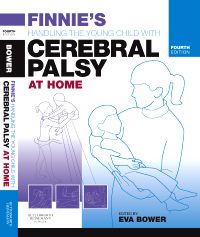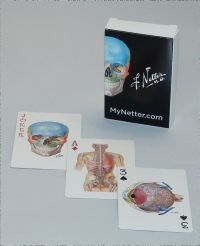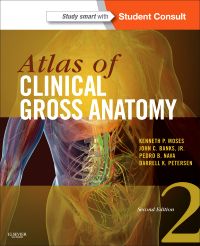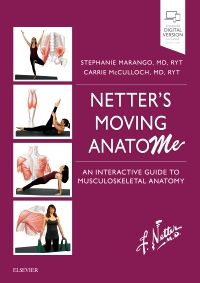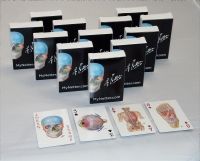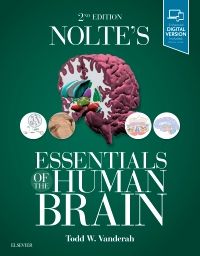The 4th edition of
Finnie’s Handling the Young Child with Cerebral Palsy at Home has been updated to reflect the current practices of today. It aims to help parents assist their child with cerebral palsy (CP) towards achieving the most comfortable independence in all activities. It is hoped to show how, by using typical parenting skills, which involve guiding and exposing a child to develop through challenging experiences, the child with CP will also develop. The book is also intended to help professionals and other carers new to this field understand, support and encourage young children with CP and their families.
Over the years since the first edition of this book was written ideas on appropriate therapies have changed and developed. Similarly opinion on early intervention has changed and the method of delivery of service has in some places moved from centralisation to home-based or community provision. The emphasis of this new edition however remains on a holistic approach to the child's needs seeing the difficulties in relation to the overall development of the child as a unique person from childhood to adulthood.
New to this edition
- New chapters include Neuroimaging, Epilepsy, Emotional health, Orthotics, Spasticity management, and Complementary and alternative medicine
- Over 460 revised illustrations showing different pieces of equipment which may be helpful and ways of holding and moving a child with cerebral palsy
- Chapters on Sleeping, Feeding, Lifting and Carrying, Toileting, Communication and Fine motor movement have been completely re-written by a professional specialising in the particular field
Key Features
- Assessment procedures and prediction of future abilities
- Management of problems (including medication if appropriate) such as epilepsy, constipation, eneurisis, nourishment, difficulty with sleeping, crying, temper tantrums, sensory deficits and deformity
- Stimulation, fitness, problem solving, compensatory strategies and ease of management
Author Information
Edited by Eva Bower and Annabel Milne
Dedication
List of contributors
Foreword by Philippa Russell
Acknowledgements
Introduction
Suggestions on how to use this book
Chapter 1 Communication between parents and professionals - Revised by E Bower
Chapter 2 Preparing for and coping with hospital appointments, assessments and admissions - C Fitzgerald & T Kerr Elliott
Chapter 3 Medical aspects of cerebral palsy: causes, associated problems and management - D Reddihough
Chapter 4 The role of different brain-imaging techniques in the diagnosis of cerebral palsy - I Krägeloh-Mann & M Wilke
Chapter 5 Epilepsy in cerebral palsy - R Guerrini & S Pellacani
Chapter 6 Parents’ problems - J Bavin & E Bower
Chapter 7 Learning and behaviour: the psychologist’s role - M Gardner
Chapter 8 Emotional health - C Laver-Bradbury
Chapter 9 Parents’ contribution to early learning: developing a dialogue using touch, sight, hearing and communication - Revised by E Bower
Chapter 10 Understanding movement, both typical and in the child with cerebral palsy - Revised by E Bower
Chapter 11 Handling - Revised by E Bower
Chapter 12 Sleeping - J Beaumont
Chapter 13 Feeding - H Cockerill
Chapter 14 Lifting and carrying - J Graham
Chapter 15 Toilet training - AJ Wright & R Kelly
Chapter 16 Bathing - Revised by E Bower
Chapter 17 Dressing - Revised by E Bower
Chapter 18 Communication - H Cockerill
Chapter 19 Hand function and fine motor activities - D Green
Chapter 20 Gross motor development in children with cerebral palsy: what do we know, and how may that knowledge help? - P Rosenbaum
Chapter 21 Chairs, pushchairs and car seats - Revised by E Bower
Chapter 22 Aids to mobility - Revised by E Bower
Chapter 23 Play - Revised by E Bower
Chapter 24 Leisure and fitness - Revised by E Bower
Chapter 25 Deformity: growth and the problems of getting taller - D Scrutton
Chapter 26 Orthoses and Children with cerebral palsy - C Morris
Chapter 27 Spasticity - DS Roy & JF McLaughlin
Chapter 28 Complementary and alternative medicine in cerebral palsy - M Bower
Appendix 1: An overview of the first five stages of sensorimotor development in a child with typical movement
Appendix 2: A typical child's gross motor development
Appendix 3: Validated measures of motor development and function which can be used for children with cerebral palsy
Appendix 4: Using the Gross Motor Function Classification System (GMFCS) for intervention planning in children 0-5 years
Appendix 5: Glossary of some of the terms used by therapists
Index
The information in the fourth edition of Finnie’s Handling the Young Child with Cerebral Palsy at Home has been extensively rewritten and much new information has been added. Throughout the book the emphasis has been changed from infant to child and the way problems and interventions change as the child grows. Overall the book is very well done and clearly written, definitely worth getting the new edition in consumer health libraries.
Consumer Connection, September 2009




